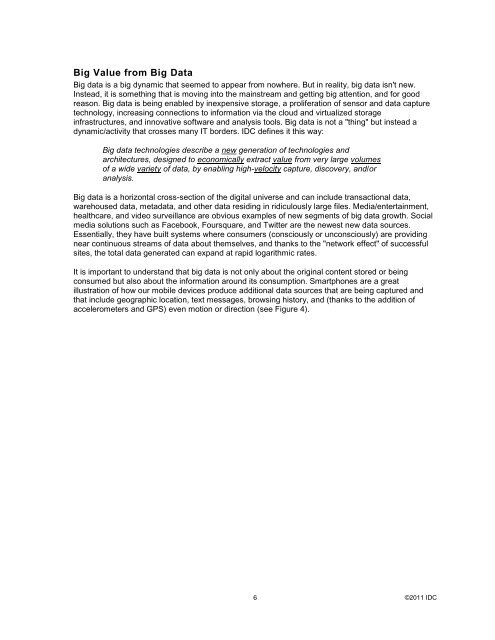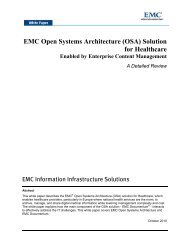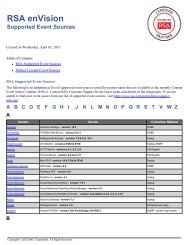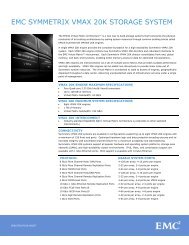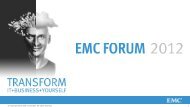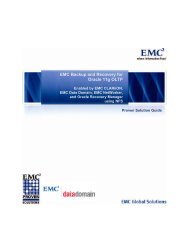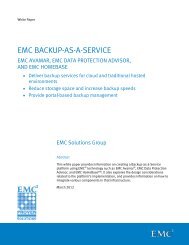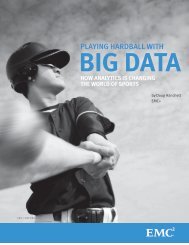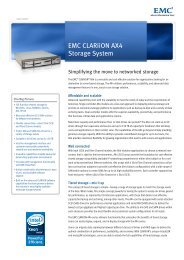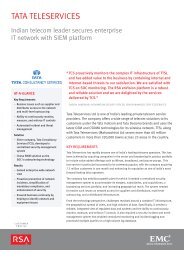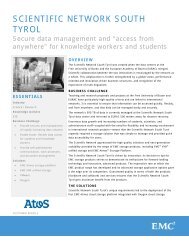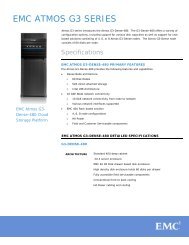Extracting Value from Chaos - EMC
Extracting Value from Chaos - EMC
Extracting Value from Chaos - EMC
You also want an ePaper? Increase the reach of your titles
YUMPU automatically turns print PDFs into web optimized ePapers that Google loves.
Big <strong>Value</strong> <strong>from</strong> Big Data<br />
Big data is a big dynamic that seemed to appear <strong>from</strong> nowhere. But in reality, big data isn't new.<br />
Instead, it is something that is moving into the mainstream and getting big attention, and for good<br />
reason. Big data is being enabled by inexpensive storage, a proliferation of sensor and data capture<br />
technology, increasing connections to information via the cloud and virtualized storage<br />
infrastructures, and innovative software and analysis tools. Big data is not a "thing" but instead a<br />
dynamic/activity that crosses many IT borders. IDC defines it this way:<br />
Big data technologies describe a new generation of technologies and<br />
architectures, designed to economically extract value <strong>from</strong> very large volumes<br />
of a wide variety of data, by enabling high-velocity capture, discovery, and/or<br />
analysis.<br />
Big data is a horizontal cross-section of the digital universe and can include transactional data,<br />
warehoused data, metadata, and other data residing in ridiculously large files. Media/entertainment,<br />
healthcare, and video surveillance are obvious examples of new segments of big data growth. Social<br />
media solutions such as Facebook, Foursquare, and Twitter are the newest new data sources.<br />
Essentially, they have built systems where consumers (consciously or unconsciously) are providing<br />
near continuous streams of data about themselves, and thanks to the "network effect" of successful<br />
sites, the total data generated can expand at rapid logarithmic rates.<br />
It is important to understand that big data is not only about the original content stored or being<br />
consumed but also about the information around its consumption. Smartphones are a great<br />
illustration of how our mobile devices produce additional data sources that are being captured and<br />
that include geographic location, text messages, browsing history, and (thanks to the addition of<br />
accelerometers and GPS) even motion or direction (see Figure 4).<br />
6<br />
©2011 IDC


